Polymers can be used in exterior cladding and siding applications. They are lightweight, durable, weather-resistant, and come in various colors and textures.
These versatile compounds have been used in everything from car parts to medical devices, but can they be used for exterior cladding and siding applications?
After researching and consulting with other experts in the field, we discovered that polymer-based cladding and siding products are becoming more popular due to their durability, versatility, and aesthetic appeal.
Key takeaways:
- Polymers are lightweight, durable, weather-resistant, and available in various designs, making them suitable for exterior cladding and siding.
- Popular polymer types for cladding and siding include vinyl, known for its low maintenance, and fiber cement, which resists moisture, fire, and pests.
- Polymer-based products are easy to install and require less maintenance than traditional materials like wood.
- Although polymer-based products have a higher upfront cost, they offer long-term savings due to their durability and low maintenance requirements.
- Polymers are made from non-renewable petrochemicals, but some can be recycled or repurposed. They also improve building insulation, reducing energy consumption.
Polymer Types for Cladding
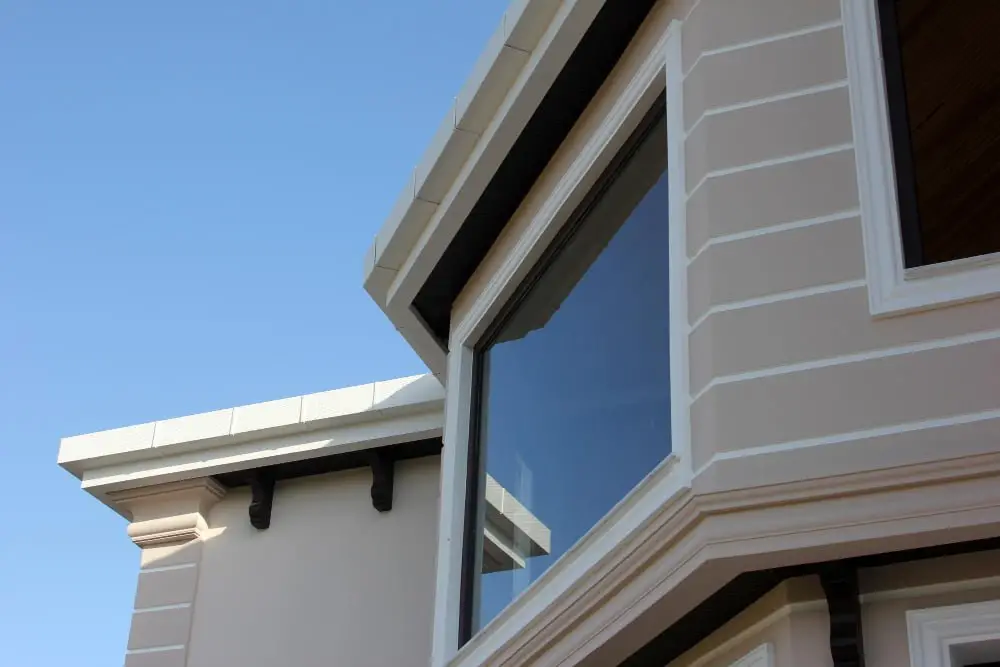
When it comes to polymers for cladding and siding, there are a few different types to consider. One popular option is vinyl, which has been used in the construction industry for decades.
Vinyl is known for its durability and low maintenance requirements, making it an attractive choice for homeowners who want a long-lasting exterior without having to spend hours on upkeep.
Fiber cement is another type of polymer that’s gaining popularity in the industry. This material combines cellulose fibers with cement and other additives to create a strong composite that can mimic the look of wood or stone while offering superior resistance against moisture, fire damage and pests.
But what about other types of polymers? Can they be used effectively as cladding or siding materials? The answer depends on several factors such as cost-effectiveness, availability in your area among others.
Polymer-based products are becoming more popular due to their durability, versatility and aesthetic appeal. It’s important when considering any new building material like this one – do your research!
Advantages of Polymer Siding
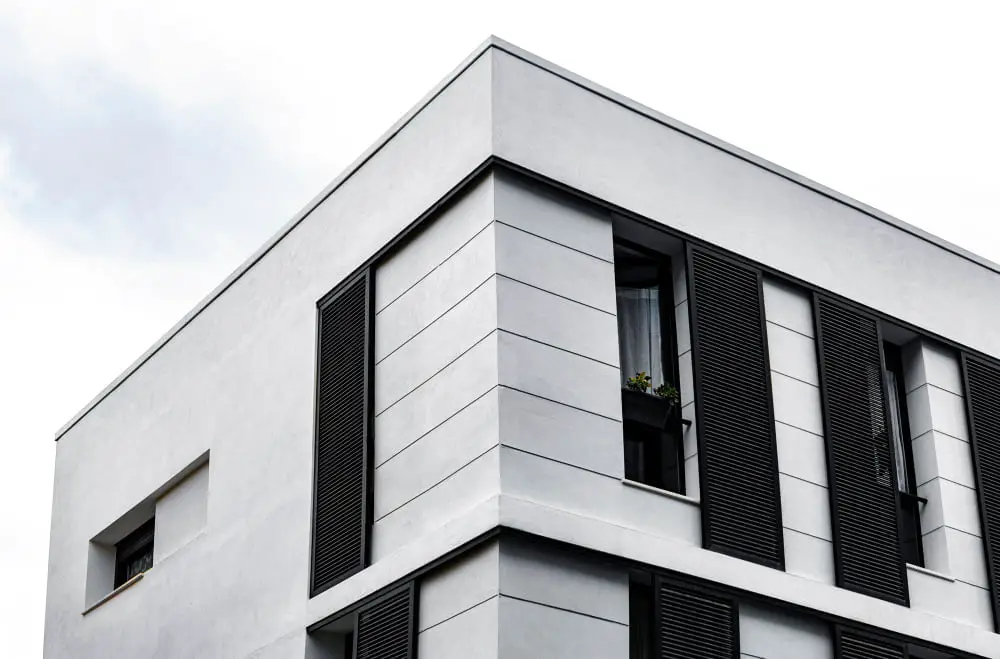
Polymer-based cladding and siding products have several advantages over traditional materials like wood or vinyl.
Firstly, polymers are incredibly durable. They can withstand harsh weather conditions without fading or warping over time.
This means they require less maintenance than other materials, which is a huge plus for homeowners who want to save time and money on upkeep.
Secondly, polymer siding is versatile in terms of design options. It comes in a wide range of colors and textures that mimic natural wood grain patterns or stone finishes while still maintaining its durability.
Lastly, using polymers for exterior cladding applications can also be an eco-friendly choice since many manufacturers use recycled materials to create their products.
If you’re looking for an alternative to traditional wood siding that’s low-maintenance yet aesthetically pleasing with plenty of design options, consider using polymer-based cladding instead.
Weather Resistance & Durability
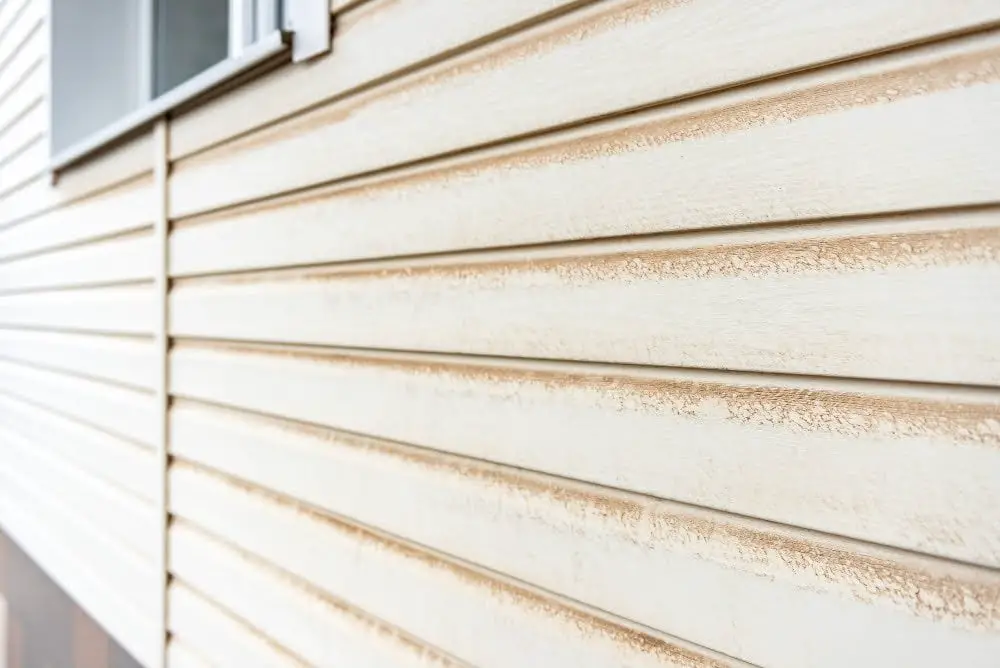
Polymer-based products are highly resistant to weathering. They don’t rot or decay like wood does over time; they won’t rust or corrode like metal; and they won’t crack or warp due to temperature changes.
In fact, many manufacturers offer warranties of up to 50 years on their polymer-based cladding and siding products because they’re so confident in their durability.
But what makes polymers so resilient? It’s all in the chemical makeup. Polymers are made up of long chains of molecules that give them strength without adding weight.
They also have excellent thermal stability which means they can withstand extreme temperatures without breaking down.
So if you’re looking for an exterior cladding or siding material that can stand up against Mother Nature’s toughest challenges while maintaining its appearance over time – consider polymers.
Installation & Maintenance
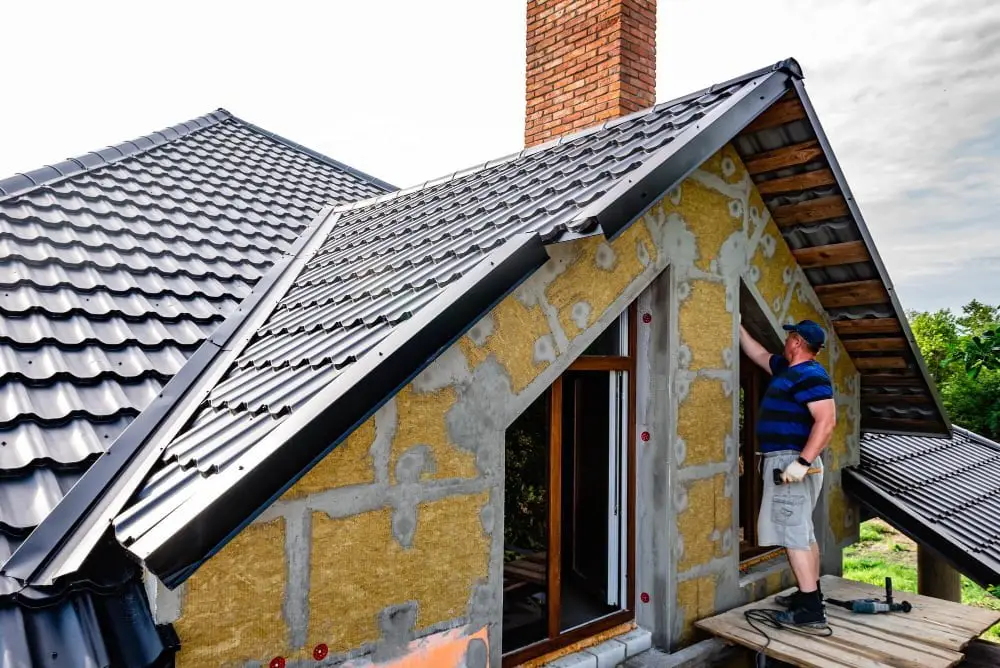
When it comes to installation, polymer-based cladding and siding products are relatively easy to work with. They can be cut and shaped using standard tools, making them a popular choice for contractors looking for an efficient installation process.
Many manufacturers offer pre-finished options that eliminate the need for painting or staining.
Unlike wood siding which requires regular upkeep such as sealing and repainting every few years, polymers are virtually maintenance-free. They do not rot or warp over time like wood does when exposed to moisture or sunlight.
But what about long-term durability? Polymer-based products come with warranties ranging from 20-50 years, depending on the manufacturer and specific product chosen.
While there may be some initial hesitation around using polymers in exterior cladding applications due to unfamiliarity with this material type, once you understand its benefits – including ease of installation, maintenance, and long-term durability, it becomes clear why more builders are turning towards these innovative solutions.
Aesthetic Appeal & Design Options
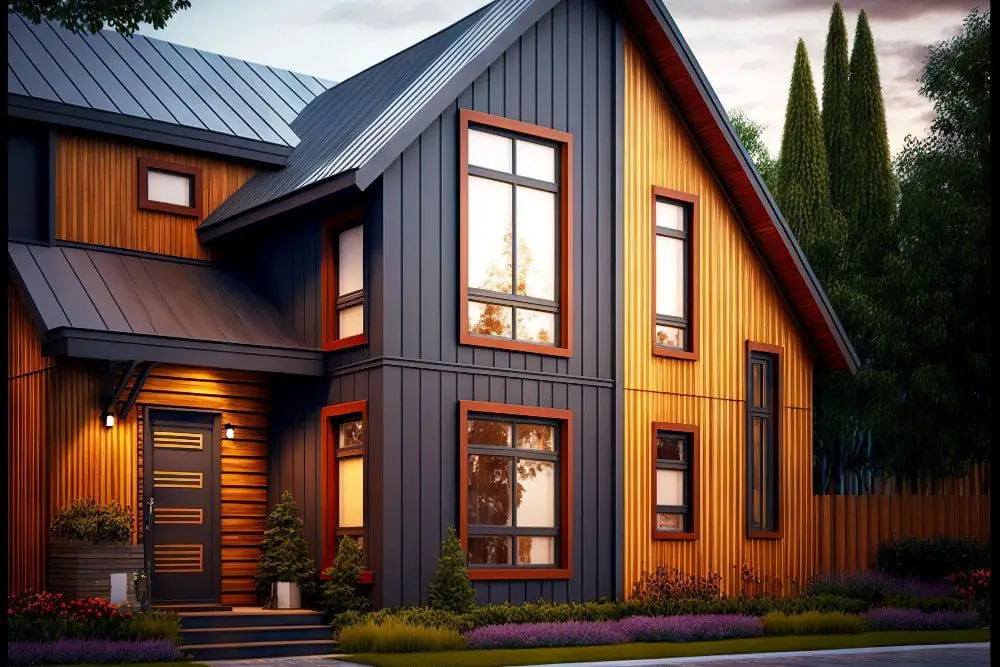
If you are used to the natural look of wood siding but also want something that could offer a modern touch to your home’s design, polymer-based products can mimic the look and texture of natural materials while offering more durability. In fact, some manufacturers have developed techniques to create realistic-looking textures by replicating grain patterns in molds.
Polymer-based products come in a wide range of colors which means you can choose from an array of options when it comes to designing your home’s exterior. Whether you want bold hues or subtle shades – there is something for everyone!
If you’re looking for an alternative material with plenty design options without compromising on aesthetics then polymers are definitely worth considering.
Cost-Effectiveness Analysis

While polymer-based products may have a higher upfront cost than traditional materials like wood or vinyl, they offer significant long-term savings in terms of maintenance and replacement costs.
Material costs range from $120.00 to $336.00 per 100 sq. ft., while installation costs range from $252.00 to $648.00. The total cost, therefore, ranges from $372.00 to $984.00.
The total average cost per square foot ranges from $3.95 to $7.20.
It’s important to note that these costs can vary based on factors such as the type of composite material used, the installation’s complexity, the property’s location, and the contractor’s rates.
Polymers are highly resistant to moisture, UV rays, and other environmental factors that can cause damage to traditional building materials. This means that they require little to no maintenance over their lifespan compared to wood or vinyl siding which need regular painting or staining.
Polymer-based products are incredibly durable and can last up to 50 years without needing replacement. This longevity makes them an excellent investment for homeowners who want a low-maintenance solution that will stand the test of time.
While polymers may have a higher initial cost than some other options on the market today; their durability coupled with minimal upkeep requirements make them an attractive choice from both financial as well as aesthetic perspectives when it comes down exterior cladding applications.
Environmental Impact
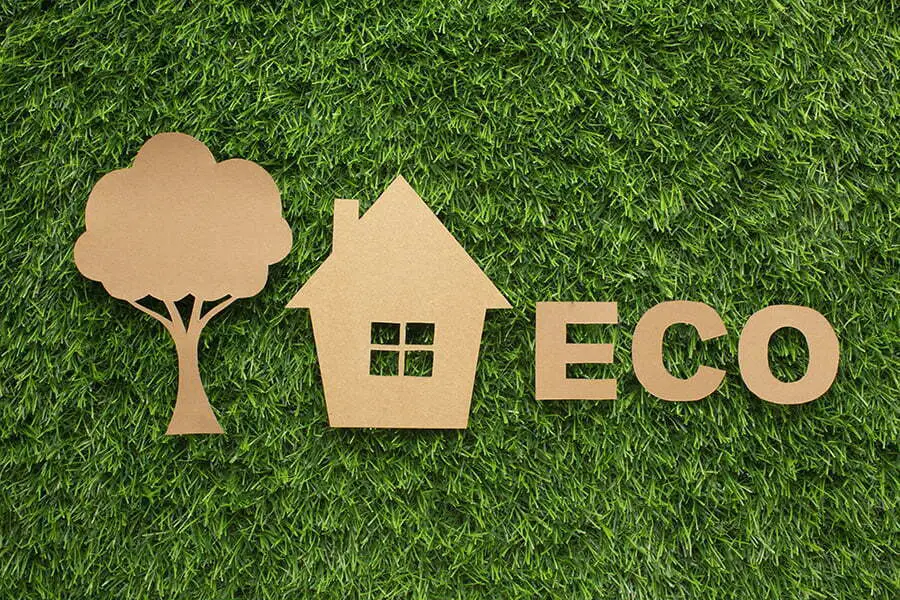
Polymers are made from petrochemicals which are non-renewable resources. However, some polymer-based products can be recycled or repurposed at end-of-life which reduces waste in landfills.
Many manufacturers have started incorporating recycled content into their polymer products to reduce their carbon footprint.
Another factor to consider is energy efficiency. Polymer-based cladding and siding can help improve insulation in buildings by reducing heat loss during winter and keeping cool air inside during summer. This means less energy is needed for heating or cooling homes, reducing greenhouse gas emissions.
While there may be some environmental concerns with using polymers in construction projects due to its reliance on petrochemicals as raw materials; there are ways that manufacturers can mitigate these impacts through recycling programs or incorporating recycled content into their products as well as improving energy efficiency within buildings themselves
Polymer Siding Vs. Traditional Materials: A Comparison
When it comes to exterior cladding and siding, there are various materials available in the market. One popular option is polymer siding, which offers several advantages over traditional materials.
Polymer siding is made from a combination of polymers and additives that enhance its durability and performance. Unlike wood or vinyl, polymer siding does not rot or warp when exposed to moisture or extreme weather conditions.
It also resists fading caused by UV rays, ensuring long-lasting color vibrancy.
In terms of maintenance, polymer siding requires minimal upkeep compared to other materials like wood that may need regular painting or staining. It is easy to clean with just soap and water.
Another advantage of polymer siding is its versatility in design options. Manufacturers can create different textures and finishes that mimic the look of natural materials such as wood shakes or stone veneer while offering better resistance against pests like termites.
Exploring Customization: Personalized Designs With Polymer Siding
With advancements in technology, manufacturers can now produce polymer siding in various colors, textures, and patterns. This means that homeowners have the freedom to choose from an extensive selection of styles to enhance the aesthetic appeal of their exteriors.
One popular customization option is color variation. Polymer siding can be manufactured in virtually any color imaginable, providing endless possibilities for creating eye-catching facades.
Whether you prefer bold and vibrant hues or more subtle earth tones, there is a polymer siding color available to match your vision.
In addition to colors, texture plays a crucial role in achieving desired aesthetics with polymer cladding. Manufacturers offer different surface finishes such as smooth or textured patterns that mimic natural materials like wood or stone.
This allows homeowners who desire the look of traditional materials without the associated maintenance concerns to achieve their desired appearance using durable polymers instead.
Furthermore, some manufacturers even provide customizable panel sizes and shapes for added design flexibility with polymer cladding systems. Homeowners can opt for larger panels for a sleek modern look or smaller ones for intricate detailing on architectural features.
Innovations and Advances in Polymer Siding Technology
These advancements have led to the development of more durable, versatile, and aesthetically pleasing options for exterior cladding.
One notable innovation is the introduction of engineered polymers that are specifically designed to withstand harsh weather conditions. These polymers are formulated with additives that enhance their resistance to UV radiation, extreme temperatures, moisture damage, and fading caused by prolonged exposure to sunlight.
Another exciting advancement is the incorporation of color-through technology in polymer siding manufacturing processes. This technique ensures that the color penetrates through the entire thickness of the material rather than just being applied as a surface coating.
As a result, scratches or chips on these types of sidings are less noticeable since they reveal consistent color throughout.
Furthermore, manufacturers have also focused on improving installation methods for polymer siding products. Some companies now offer interlocking systems or tongue-and-groove designs that simplify installation while providing enhanced protection against water infiltration.
Advancements in 3D printing technology have opened up new possibilities for creating intricate patterns and textures on polymer sidings without compromising durability or performance.
The Impact of UV and Heat On Polymer Cladding
Exposure to sunlight over time can cause the color of the cladding to fade, leading to a dull appearance. UV rays can break down the chemical bonds in polymers, causing them to become brittle and prone to cracking.
To combat these issues, manufacturers often incorporate additives into polymer formulations that provide UV resistance. These additives act as a shield against harmful UV rays by absorbing or reflecting them before they reach the surface of the cladding.
Heat is another factor that affects polymer cladding performance. High temperatures can cause expansion and contraction in materials, which may lead to warping or distortion of siding panels.
To address this concern, engineers design polymer sidings with thermal stability in mind.
By selecting appropriate polymers with high melting points and incorporating heat stabilizers into their formulation, manufacturers ensure that their products are capable of withstanding extreme temperature fluctuations without compromising structural integrity.
Fire-Resistance of Polymer Cladding and Siding
These materials are designed to withstand high temperatures and reduce the spread of flames in case of a fire incident.
One key factor contributing to the fire-resistance of polymer cladding is their composition. They are typically made from polymers that have been specially formulated with additives to enhance their resistance against heat and flames.
These additives can include flame retardants, which work by slowing down or inhibiting the combustion process.
In addition to their inherent resistance, polymer cladding systems often undergo rigorous testing procedures to ensure compliance with industry standards for fire safety. This includes tests such as flame spread index (FSI) and smoke developed index (SDI), which measure how quickly flames spread across a surface and how much smoke is generated during combustion.
Furthermore, some polymer cladding products incorporate additional features like intumescent coatings or layers that expand when exposed to heat, forming an insulating barrier between the building structure and the fire source. This helps protect underlying materials from direct contact with flames or excessive heat transfer.
It’s important to note that while polymer claddings offer good fire-resistance properties compared to other traditional materials like wood or vinyl siding, they should still be installed according to manufacturer guidelines for optimal performance in case of a potential fi.
FAQ
Is polymer siding better than vinyl siding?
Despite polymer siding being stronger than vinyl, the significant increase in cost with minimal additional benefits makes vinyl siding a more sensible choice for most homeowners.
What is the difference between exterior cladding and siding?
The primary difference between exterior cladding and siding is that while siding is fixed directly onto a wall, cladding forms part of an insulated wall assembly and is usually distanced from the exterior sheathing, allowing for a drainage plane and a water-resistive barrier.
What is polymer siding made of?
Polymer siding is primarily composed of a durable type of plastic known as polypropylene resin.
What is exterior cladding?
Exterior cladding is an external protective layer that serves the dual purpose of safeguarding and enhancing the aesthetics of a building envelope.
How does the durability of polymer siding compare to other siding materials?
Polymer siding is more durable than most traditional siding materials as it is resistant to rust, rot, and insects, does not fade or warp easily, and requires less maintenance.
What are the environmental impacts of producing and disposing of polymer siding?
The production and disposal of polymer siding generate significant greenhouse gas emissions, cause waste management issues due to non-degradability, and potentially release harmful toxins upon incineration.
In what ways does the use of polymer in construction contribute to energy efficiency?
The use of polymers in construction contributes to energy efficiency by providing superior insulation, reducing energy loss, and enhancing the durability of structures, which translates into less frequent replacements and repairs.
Recap




